-
 Bitcoin
Bitcoin $118200
0.13% -
 Ethereum
Ethereum $3747
4.69% -
 XRP
XRP $3.515
2.31% -
 Tether USDt
Tether USDt $1.000
-0.02% -
 BNB
BNB $753.8
2.58% -
 Solana
Solana $181.7
2.19% -
 USDC
USDC $0.9997
-0.01% -
 Dogecoin
Dogecoin $0.2714
12.11% -
 Cardano
Cardano $0.8700
4.49% -
 TRON
TRON $0.3170
-1.09% -
 Hyperliquid
Hyperliquid $46.67
3.75% -
 Stellar
Stellar $0.4732
1.93% -
 Sui
Sui $3.937
2.55% -
 Chainlink
Chainlink $19.49
5.52% -
 Hedera
Hedera $0.2777
3.08% -
 Bitcoin Cash
Bitcoin Cash $547.4
5.82% -
 Avalanche
Avalanche $25.23
1.29% -
 Shiba Inu
Shiba Inu $0.00001562
4.48% -
 Litecoin
Litecoin $117.1
4.09% -
 UNUS SED LEO
UNUS SED LEO $8.991
0.15% -
 Toncoin
Toncoin $3.293
2.21% -
 Polkadot
Polkadot $4.517
1.96% -
 Uniswap
Uniswap $10.65
5.08% -
 Ethena USDe
Ethena USDe $1.001
0.00% -
 Monero
Monero $325.1
1.49% -
 Pepe
Pepe $0.00001425
6.78% -
 Bitget Token
Bitget Token $4.962
1.38% -
 Dai
Dai $0.9999
-0.01% -
 Aave
Aave $326.9
3.03% -
 Bittensor
Bittensor $425.7
2.24%
What are the characteristics of fast and slow lines repeatedly crossing near the zero axis? How to identify the breakthrough signal?
Fast line crossing above slow line near zero axis signals bullish momentum, while crossing below indicates bearish trend; confirm with volume and price action.
May 29, 2025 at 06:49 am
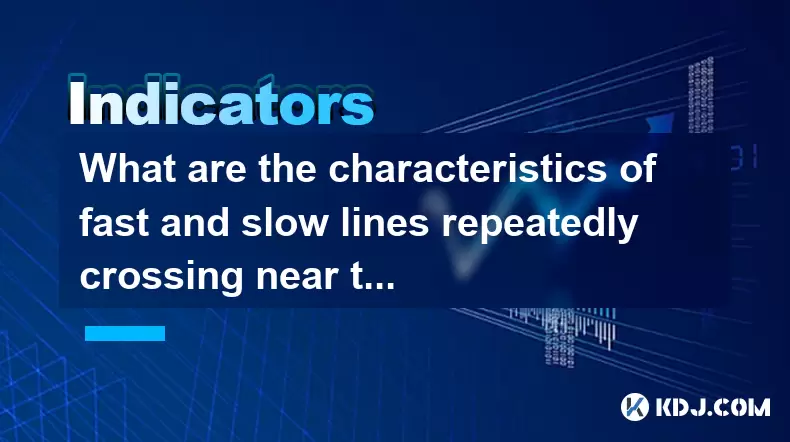
The concept of fast and slow lines crossing near the zero axis is commonly discussed in the context of technical analysis within the cryptocurrency market, particularly when using the Moving Average Convergence Divergence (MACD) indicator. Understanding the characteristics of these crossings and identifying breakthrough signals can be crucial for traders looking to make informed decisions. This article will explore the intricacies of these phenomena and provide detailed guidance on how to interpret and act on them.
Characteristics of Fast and Slow Lines Crossing Near the Zero Axis
The MACD indicator consists of two lines: the fast line (MACD line) and the slow line (signal line). The fast line is calculated as the difference between two exponential moving averages (EMAs), typically the 12-period and 26-period EMAs. The slow line is a 9-period EMA of the fast line. When these lines cross near the zero axis, it can signal potential shifts in market momentum.
The fast line crossing above the slow line near the zero axis is often interpreted as a bullish signal. This indicates that the shorter-term momentum is increasing relative to the longer-term momentum, suggesting that the price might start to rise. Conversely, the fast line crossing below the slow line near the zero axis is typically seen as a bearish signal, indicating that the shorter-term momentum is decreasing, which could lead to a price decline.
These crossings near the zero axis are particularly significant because they occur at a point where the market is in a state of equilibrium. A move away from the zero axis after such a crossing can indicate the beginning of a new trend. Traders should pay close attention to these events as they can provide early indications of trend reversals or continuations.
Identifying the Breakthrough Signal
Identifying a breakthrough signal after the fast and slow lines cross near the zero axis involves a combination of technical analysis and market observation. Here’s how to approach it:
- Confirm the Crossing: First, ensure that the fast line has indeed crossed the slow line near the zero axis. This can be done by observing the chart and noting the exact point of intersection relative to the zero line.
- Monitor Subsequent Movement: After the crossing, watch the movement of both lines. A strong move away from the zero axis in the direction of the crossing (up for bullish, down for bearish) can confirm the breakthrough signal.
- Volume Analysis: It’s important to consider trading volume alongside the MACD. A significant increase in volume following the crossing can reinforce the validity of the breakthrough signal.
- Price Action: Finally, observe the price action on the chart. If the price begins to move in the direction indicated by the MACD crossing (upward for bullish, downward for bearish), this can further validate the breakthrough signal.
Practical Application in Trading
To apply these insights in real-time trading, consider the following steps:
- Set Up the MACD Indicator: Ensure your trading platform is configured to display the MACD indicator. Most platforms allow you to customize the periods used for the fast and slow lines, but the default settings (12, 26, 9) are widely used and effective.
- Monitor the Zero Axis: Keep an eye on the zero axis on your MACD chart. This is where the fast and slow lines will cross to signal potential trend changes.
- React to Crossings: When you observe the fast line crossing the slow line near the zero axis, prepare for a potential trend shift. If the fast line crosses above, consider looking for buying opportunities. If it crosses below, consider looking for selling opportunities.
- Confirm with Other Indicators: Use additional technical indicators like the Relative Strength Index (RSI) or Bollinger Bands to confirm the MACD signal. A confluence of signals from different indicators can increase the reliability of your trading decisions.
Case Study: Bullish Breakthrough Signal
Let’s examine a hypothetical scenario to illustrate how a bullish breakthrough signal might play out:
- Initial Observation: The fast line crosses above the slow line near the zero axis on the MACD chart for Bitcoin (BTC).
- Subsequent Movement: Following the crossing, both lines begin to move upwards away from the zero axis, indicating increasing bullish momentum.
- Volume Confirmation: Trading volume for BTC increases significantly over the next few hours, suggesting strong market interest in the upward move.
- Price Action: The price of BTC starts to rise, breaking through a recent resistance level, further confirming the bullish signal.
In this scenario, a trader might decide to enter a long position on BTC, expecting the price to continue its upward trajectory based on the confirmed MACD signal.
Case Study: Bearish Breakthrough Signal
Now, consider a hypothetical bearish scenario:
- Initial Observation: The fast line crosses below the slow line near the zero axis on the MACD chart for Ethereum (ETH).
- Subsequent Movement: Both lines move downwards away from the zero axis, indicating increasing bearish momentum.
- Volume Confirmation: Trading volume for ETH increases, suggesting strong selling pressure.
- Price Action: The price of ETH starts to decline, breaking through a recent support level, confirming the bearish signal.
In this case, a trader might decide to enter a short position on ETH, expecting the price to continue falling based on the confirmed MACD signal.
Common Pitfalls and How to Avoid Them
While the MACD can be a powerful tool, there are common pitfalls that traders should be aware of:
- False Signals: Not every crossing near the zero axis will result in a significant trend change. Sometimes, these crossings can be false signals. To mitigate this risk, always use additional confirmation from other indicators and volume analysis.
- Overreliance on a Single Indicator: Relying solely on the MACD without considering other aspects of market analysis can lead to poor trading decisions. Always integrate the MACD with a broader analysis strategy.
- Ignoring Market Context: The effectiveness of MACD signals can vary depending on the overall market context. For instance, during highly volatile periods, signals might be less reliable. Always consider the broader market environment when interpreting MACD signals.
Frequently Asked Questions
Q: Can the MACD be used effectively on all timeframes?
A: The MACD can be used on various timeframes, from short-term intraday charts to long-term weekly or monthly charts. However, its effectiveness can vary. On shorter timeframes, the MACD might generate more frequent signals, but these can be noisier and less reliable. On longer timeframes, the signals tend to be more significant but less frequent. Traders should adjust their strategy according to the timeframe they are trading on.
Q: How can I adjust the MACD settings for different cryptocurrencies?
A: While the default settings (12, 26, 9) are widely used, you can adjust the MACD settings to better suit the volatility and trading patterns of specific cryptocurrencies. For highly volatile assets, you might want to use shorter periods to capture quicker momentum changes. Conversely, for less volatile assets, longer periods might be more appropriate. Experiment with different settings and backtest them to find what works best for your trading style and the specific cryptocurrency you are trading.
Q: Is the MACD more effective for trending or ranging markets?
A: The MACD is generally more effective in trending markets where it can help identify the continuation or reversal of trends. In ranging markets, the MACD can generate many false signals as the price oscillates around a central level. In such cases, traders might find other indicators like the RSI or Bollinger Bands more useful for identifying overbought or oversold conditions within the range.
Q: How often should I check the MACD for new signals?
A: The frequency with which you check the MACD depends on your trading style and the timeframe you are using. For day traders, checking the MACD every few minutes to hours might be necessary. For swing traders, checking once or twice a day might suffice. Long-term investors might only need to check the MACD on a weekly or monthly basis. Always ensure that you are not overtrading based on short-term fluctuations, especially if your strategy is designed for longer timeframes.
Disclaimer:info@kdj.com
The information provided is not trading advice. kdj.com does not assume any responsibility for any investments made based on the information provided in this article. Cryptocurrencies are highly volatile and it is highly recommended that you invest with caution after thorough research!
If you believe that the content used on this website infringes your copyright, please contact us immediately (info@kdj.com) and we will delete it promptly.
- Crypto & Institutions in July 2025: What's the Hype?
- 2025-07-21 04:30:12
- Pepeto, DOGE, SHIB Prices: What's Hot and What's Not in the Meme Coin Mania
- 2025-07-21 04:30:12
- Bitcoin's Wild Ride: Records, Rallies, and Reversals - A New Yorker's Take
- 2025-07-21 02:30:12
- CoinDCX Hack: $44 Million Lost, User Funds Safe... For Now?
- 2025-07-21 02:30:12
- BONK, FLOKI, Remittix Predictions: Navigating the Meme Coin Mania and Beyond
- 2025-07-21 02:50:13
- Hacker Attack on CoinDCX: Funds Safe, But Lessons Learned
- 2025-07-21 02:50:13
Related knowledge
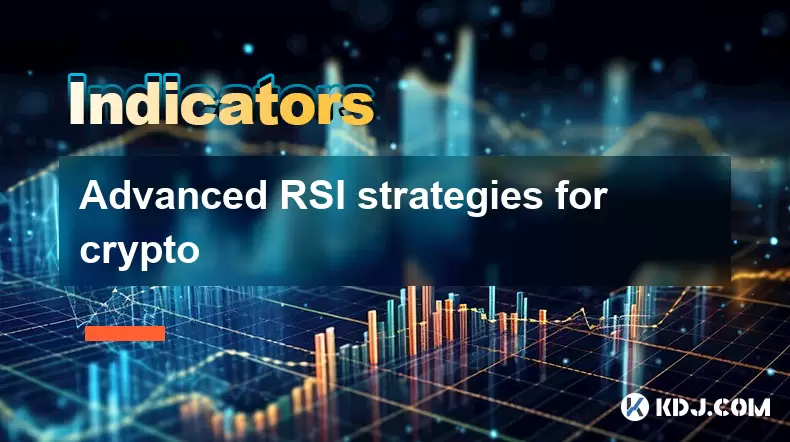
Advanced RSI strategies for crypto
Jul 13,2025 at 11:01am
Understanding the Basics of RSI in Cryptocurrency TradingThe Relative Strength Index (RSI) is a momentum oscillator used to measure the speed and chan...
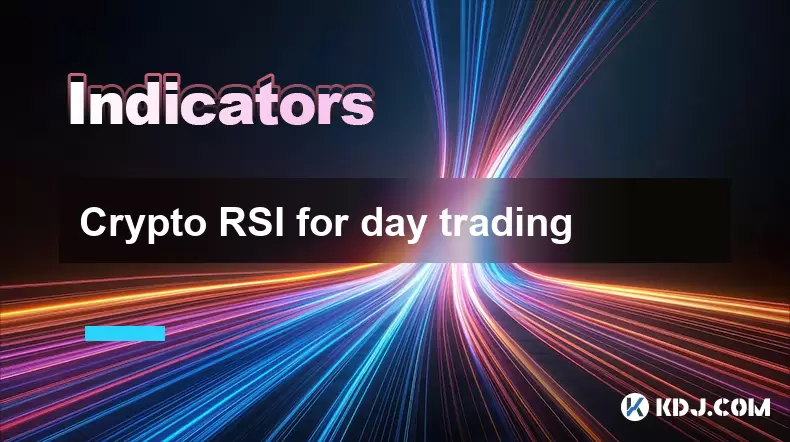
Crypto RSI for day trading
Jul 12,2025 at 11:14am
Understanding RSI in the Context of Cryptocurrency TradingThe Relative Strength Index (RSI) is a momentum oscillator used to measure the speed and cha...
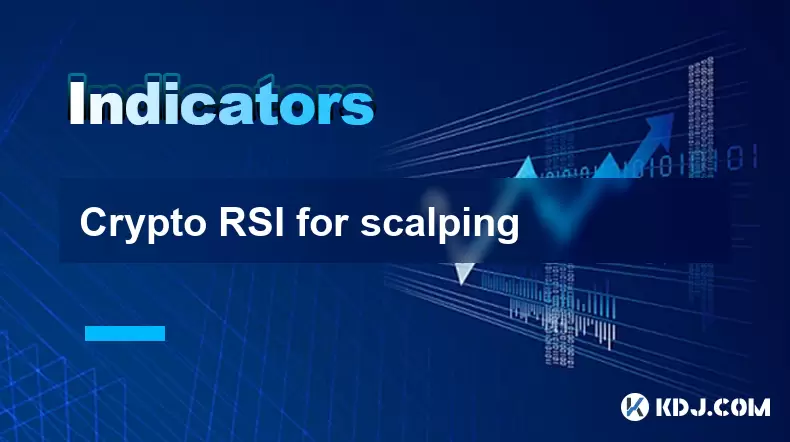
Crypto RSI for scalping
Jul 12,2025 at 11:00pm
Understanding RSI in the Context of Crypto TradingThe Relative Strength Index (RSI) is a momentum oscillator widely used by traders to measure the spe...
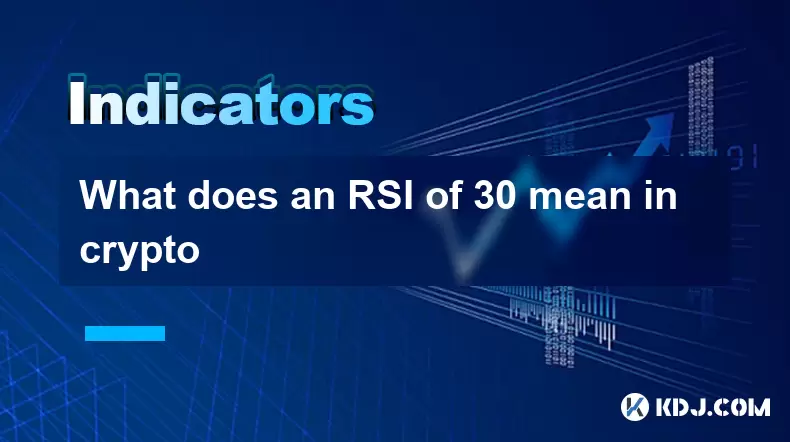
What does an RSI of 30 mean in crypto
Jul 15,2025 at 07:07pm
Understanding RSI in Cryptocurrency TradingRelative Strength Index (RSI) is a momentum oscillator widely used in cryptocurrency trading to measure the...
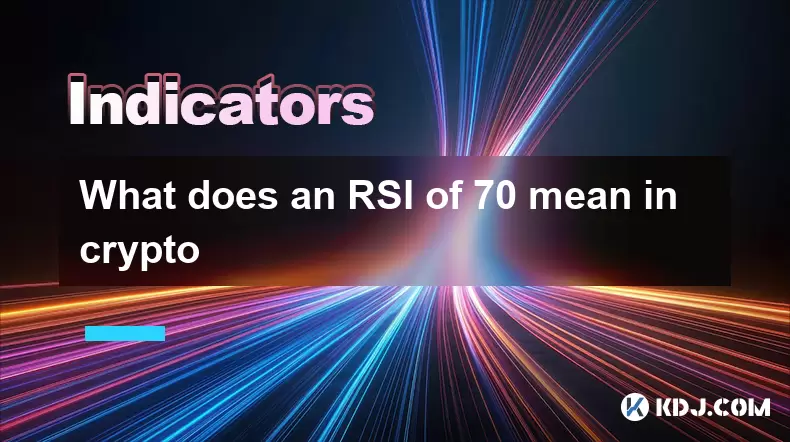
What does an RSI of 70 mean in crypto
Jul 13,2025 at 06:07pm
Understanding the RSI Indicator in Cryptocurrency TradingThe Relative Strength Index (RSI) is a widely used technical analysis tool that helps traders...
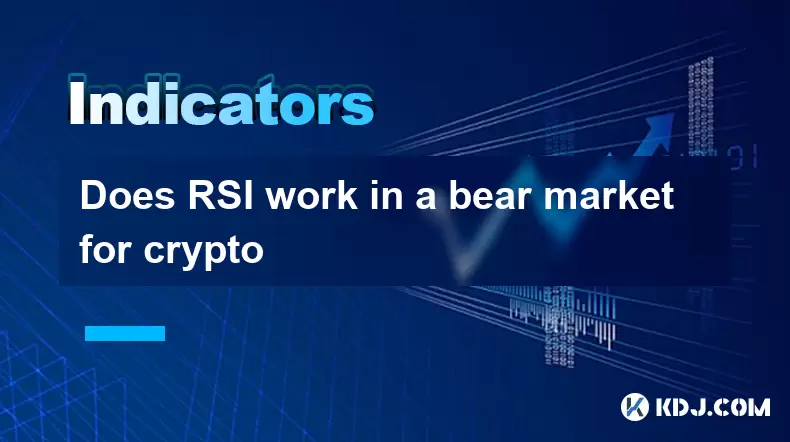
Does RSI work in a bear market for crypto
Jul 16,2025 at 01:36pm
Understanding RSI in Cryptocurrency TradingThe Relative Strength Index (RSI) is a momentum oscillator used by traders to measure the speed and change ...

Advanced RSI strategies for crypto
Jul 13,2025 at 11:01am
Understanding the Basics of RSI in Cryptocurrency TradingThe Relative Strength Index (RSI) is a momentum oscillator used to measure the speed and chan...

Crypto RSI for day trading
Jul 12,2025 at 11:14am
Understanding RSI in the Context of Cryptocurrency TradingThe Relative Strength Index (RSI) is a momentum oscillator used to measure the speed and cha...

Crypto RSI for scalping
Jul 12,2025 at 11:00pm
Understanding RSI in the Context of Crypto TradingThe Relative Strength Index (RSI) is a momentum oscillator widely used by traders to measure the spe...

What does an RSI of 30 mean in crypto
Jul 15,2025 at 07:07pm
Understanding RSI in Cryptocurrency TradingRelative Strength Index (RSI) is a momentum oscillator widely used in cryptocurrency trading to measure the...

What does an RSI of 70 mean in crypto
Jul 13,2025 at 06:07pm
Understanding the RSI Indicator in Cryptocurrency TradingThe Relative Strength Index (RSI) is a widely used technical analysis tool that helps traders...

Does RSI work in a bear market for crypto
Jul 16,2025 at 01:36pm
Understanding RSI in Cryptocurrency TradingThe Relative Strength Index (RSI) is a momentum oscillator used by traders to measure the speed and change ...
See all articles

























































































